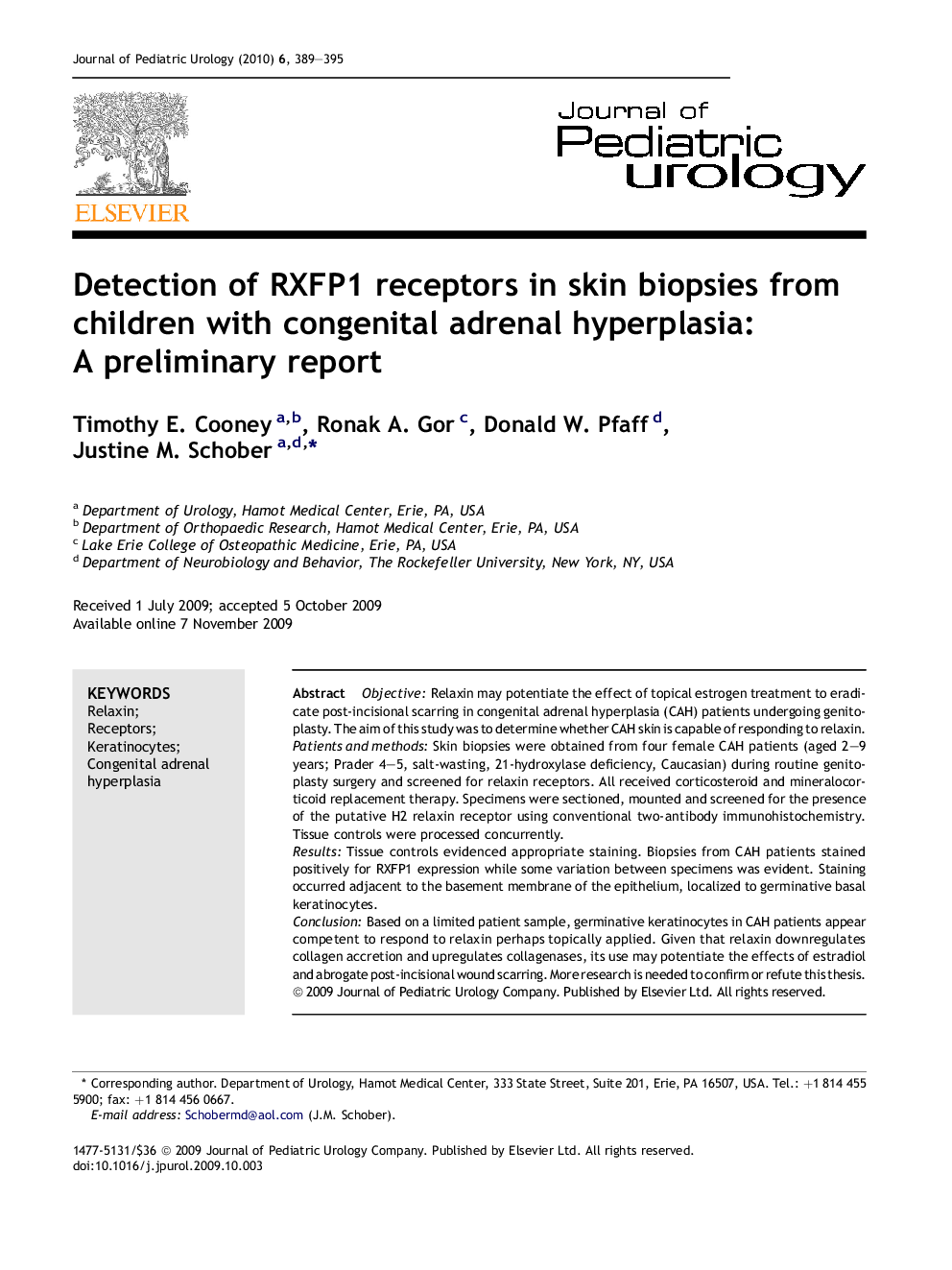| Article ID | Journal | Published Year | Pages | File Type |
|---|---|---|---|---|
| 4163299 | Journal of Pediatric Urology | 2010 | 7 Pages |
ObjectiveRelaxin may potentiate the effect of topical estrogen treatment to eradicate post-incisional scarring in congenital adrenal hyperplasia (CAH) patients undergoing genitoplasty. The aim of this study was to determine whether CAH skin is capable of responding to relaxin.Patients and methodsSkin biopsies were obtained from four female CAH patients (aged 2–9 years; Prader 4–5, salt-wasting, 21-hydroxylase deficiency, Caucasian) during routine genitoplasty surgery and screened for relaxin receptors. All received corticosteroid and mineralocorticoid replacement therapy. Specimens were sectioned, mounted and screened for the presence of the putative H2 relaxin receptor using conventional two-antibody immunohistochemistry. Tissue controls were processed concurrently.ResultsTissue controls evidenced appropriate staining. Biopsies from CAH patients stained positively for RXFP1 expression while some variation between specimens was evident. Staining occurred adjacent to the basement membrane of the epithelium, localized to germinative basal keratinocytes.ConclusionBased on a limited patient sample, germinative keratinocytes in CAH patients appear competent to respond to relaxin perhaps topically applied. Given that relaxin downregulates collagen accretion and upregulates collagenases, its use may potentiate the effects of estradiol and abrogate post-incisional wound scarring. More research is needed to confirm or refute this thesis.
